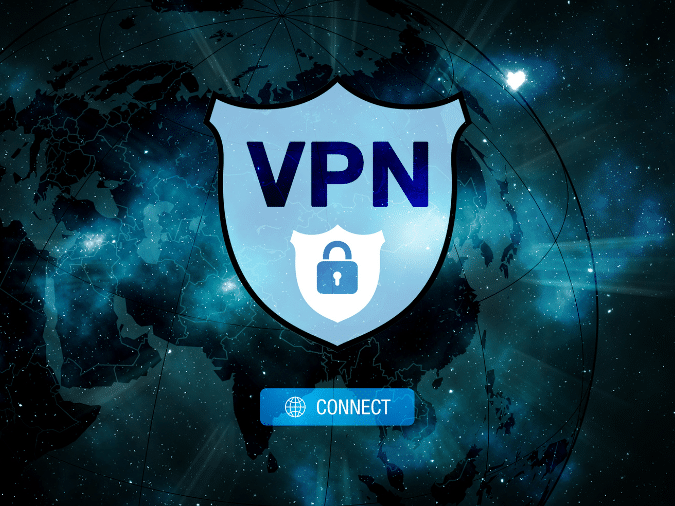

Pritunl platform as a free open source web platform allows you to create your own VPN. We will set up our self-hosted OpenVPN Pritunl step by step. Create a cloud VPN with complex site-to-site links, gateway links, and provide local network access to remote users. Protect your network traffic and remote users connecting over public connections with secure encryption. All from a simple web interface that is Pritunl In this video, I am going to explain how to build your own VPN self-hosted with Pritunl platform on Digitalocean. With only $5 a month, you can have your own VPN and secure your own network.
✅Digitalocean signup link for free $100 Here: https://m.do.co/c/60ffb2d66309
✅Shopify & google Shopping Tutorials Playlist Here! http://bit.ly/2rsmuBk
✅ My Ecom Dropshipping Course: http://bit.ly/37IKQr3
✅ Follow Me On Instagram: https://bit.ly/3hBnasE
As the digital age evolves, protecting your privacy online has become more critical than ever. Gone are the days when you could surf the web without a care in the world. Nowadays, you need to be cautious about cyber threats, hackers, bandwidth throttling, and data collection. And this is where our comprehensive WordPress post “Setup Your Own Private OpenVPN Server on DigitalOcean droplet” steps in to save the day!
In our latest, greatest, and most creatively crafted guide, we’ll walk you through the process of setting up your very own Private OpenVPN Server on a DigitalOcean droplet. This virtual server will act as your guardian angel, providing you with the ultimate shield against potential threats and harmful invasions on your privacy.
Our OpenVPN Server Setup encompasses all the necessary steps, offering a broad spectrum of unique features, benefits, and pure awesomeness that will leave you brimming with satisfaction:
Our captivating post isn’t just a mere step-by-step guide. It’s your go-to manual, filled with in-depth explanations, expert tips, and visual aids to ensure your setup process goes as smoothly as possible.
From creating your DigitalOcean droplet to configuring your server, generating security certificates, DNS setup, and the final OpenVPN server deployment – our guide has got you covered! It’s the perfect resource for beginners and professionals alike.
So why wait any longer? Your digital security and privacy are just a few clicks away! Jump into the world of OpenVPN and configure your private server today. Head over to our WordPress post “Setup Your Own Private OpenVPN Server on DigitalOcean droplet” and begin exploring the freedom and protection that your very own OpenVPN Server can offer. Your digital identity will thank you!
Having your own OpenVPN server can provide a cost-effective and secure way of allowing remote access to your network from anywhere in the world. OpenVPN is open source software that is used to create a secure tunnel between two separate networks using encryption and authentication protocols. DigitalOcean Droplets provide an ideal platform for setting up your own OpenVPN server, allowing you to securely connect to your private networks using a wide range of mobile devices, as well as Windows, Linux, and macOS systems.
This guide walks you through the steps required to setup your own private OpenVPN server on a DigitalOcean Droplet. It is assumed that you have a DigitalOcean account and have already created a Droplet for your OpenVPN server.
The first step is to login to your Droplet via SSH. Once you’re logged in, you’ll need to run the following commands to install the OpenVPN server and configure it:
# apt-get update
# apt-get install openvpn easy-rsa
This will install the OpenVPN server software and the Easy-RSA package onto the Droplet. The Easy-RSA package contains scripts that will be used to quickly configure the OpenVPN server.
The next step is to configure the files for the OpenVPN server. You will need to copy the example server configuration file to a configuration file for your server:
# cp /usr/share/doc/openvpn/examples/sample-config-files/server.conf.gz /etc/openvpn/
# gunzip /etc/openvpn/server.conf.gz
# vi /etc/openvpn/server.conf
You will need to edit the configuration file using a text editor such as vi. You should edit the following lines in the configuration file:
– Change cipher and HMAC ciphers
- Change the key size to 2048
– Change the tls-version to use only TLSv1.2
– Change the LZO compression to “No”
Once you’ve edited the server configuration file, you can use the Easy-RSA scripts to generate the keys and certificates needed for the OpenVPN server.
# cd /usr/share/easy-rsa/
# ./easyrsa init-pki
# ./easyrsa build-ca
# ./easyrsa build-server-full server
The first two commands will create the necessary RSA directories and files, while the last command will generate the server’s keys and certificates. After that, the next step is to generate a client certificate and key for a specific user.
# ./easyrsa build-client-full
The command above will generate the necessary keys and certificates for the username that you specified. Once the keys and certificates have been generated, you need to copy them to the OpenVPN server configuration folder:
# mkdir /etc/openvpn/certs
# cd /usr/share/easy-rsa/pki/
# cp ca.crt issued/server.crt private/server.key /etc/openvpn/certs/
# cp issued/.crt private/.key /etc/openvpn/certs/
The last step is to start the OpenVPN server:
# systemctl enable openvpn@server
# systemctl start openvpn@server
That’s it! Your OpenVPN server is now fully configured and ready for use. You can now download a client configuration file for the user you created, which will allow you to securely connect to your Private OpenVPN server.
Yes, you can use DigitalOcean as a VPN. DigitalOcean offers cloud infrastructure services, including Virtual Private Servers (VPS). With a VPS from DigitalOcean, you have the ability to configure and set up your own VPN server. By installing VPN software on your VPS, you can create a secure and private network connection for your internet activities. This allows you to encrypt your internet traffic, bypass regional restrictions, and protect your online privacy. DigitalOcean’s reliable infrastructure and global data center locations provide a stable and fast VPN connection. However, it’s worth noting that setting up and maintaining a VPN on DigitalOcean requires some technical knowledge, so it’s advisable to have prior experience or seek guidance to ensure a proper setup.
To create a VPN on DigitalOcean, begin by signing up for an account and creating a droplet (a virtual machine). Choose a Linux distribution, such as Ubuntu, and select an appropriate size for your droplet based on your requirements. Next, connect to the droplet via SSH. Once connected, update the droplet’s operating system and install necessary packages for setting up the VPN, such as OpenVPN. Configure the OpenVPN server by generating the necessary cryptographic files and setting up the network routing. Create client certificates and keys, and configure the server firewall to allow VPN connections. Finally, test the VPN connection by connecting from a client device, ensuring that the traffic is securely routed through the DigitalOcean droplet.
Yes, it is possible to create your own Virtual Private Network (VPN) server. Setting up your own VPN server allows you to have complete control over your online privacy and security. To create a VPN server, you will need a dedicated computer or a virtual private server (VPS) with sufficient processing power and storage. Additionally, you will require VPN server software, such as OpenVPN or WireGuard, which can be installed and configured on your chosen server platform. Once installed, you can establish secure connections to your VPN server from anywhere using a compatible VPN client. This self-hosted VPN solution offers numerous benefits, including the ability to bypass geo-restrictions, protect your personal information on public Wi-Fi networks, and maintain your anonymity while browsing the internet. However, it is important to note that creating your own VPN server requires technical knowledge and expertise, so it may not be suitable for everyone.
Setting up a cloud VPN server is a straightforward process that can provide secure remote access to your network resources. Firstly, choose a cloud service provider that offers VPN services, such as Amazon Web Services or Google Cloud. Next, create a virtual private network instance in your chosen cloud environment. This will involve specifying the appropriate security protocols and settings for your VPN, such as authentication mechanisms and encryption algorithms. Once your VPN instance is created, you can configure the network settings and assign IP addresses to the VPN clients. It is crucial to set up the appropriate firewall rules and access control lists to ensure only authorized traffic can access your VPN server. Lastly, you will need to install and configure a VPN client on the devices that require remote access to your network. This entails providing the necessary connection details, such as the public IP address or DNS hostname of your VPN server. After completing these steps, your cloud VPN server will be ready to provide secure connectivity to your network resources from anywhere in the world.
DigitalOcean is a leading cloud infrastructure provider known for offering easy-to-use and flexible solutions. One of their prominent features is the inclusion of a secure VPN (Virtual Private Network) service. This VPN allows users to establish encrypted connections to their Droplets (virtual machines) on DigitalOcean’s platform. By utilizing this VPN, users can ensure their data and communications are protected from malicious actors. Whether it is a personal project or a business application, DigitalOcean’s VPN adds an extra layer of security to the cloud infrastructure, allowing users to confidently work and exchange information. With DigitalOcean’s VPN service, users can enjoy peace of mind knowing that their online activities are shielded from prying eyes and potential cyber threats.
Copyright © 2023 Noordev technologies Inc. All Rights Reserved.